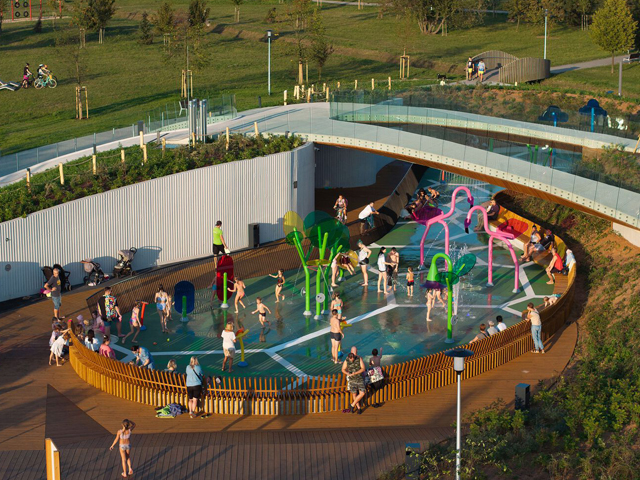AUSTRALIAN PLAYGROUND STANDARDS BASICS EVERY DESIGNER SHOULD KNOW
04 Jun 2024
Any playground design requires a detailed knowledge of the content and application of the Australian Playground Standards during the design process. However, it’s helpful for everyone involved in a playground project to understand some key concepts of the Standards.

The current Australian Standard for playground equipment, AS 4685:2021, was introduced in 2004 and updated in 2021, and is closely aligned with the European Standard. Some changes made were significant, and they more closely reflect global trends in playground child safety.
Whether you’re a landscape architect developing a new school playground or a project manager working on a public park redevelopment, a basic understanding of playground design safety standards is helpful to ensure compliance with AS4685:2021.
MINIMUM SPACE
The minimum space is the area required for the safe use of the equipment. It comprises of the space occupied by the equipment, falling space and free space. The minimum space influences the height, amount and type of playground equipment that can be included in a playspace.
FREE HEIGHT OF FALL
In a playground complex, the free height of fall must be individually assessed for each component. It should be noted that the playground standard specifies a maximum free height of fall of 3.0m, with supervised early childhood centres being restricted to 1.8m.
FALLING SPACE
Falling space is the space in, on or around the equipment that can be passed through by a user falling from an elevated part of the equipment. Calculating the falling space broadly depends on the FHOF, which is the greatest vertical distance from the clearly intended body support to the surface below.
FREE SPACE
Free space is the space needed for the normal use of the equipment. It is defined as the space in, on or around the equipment that can be occupied by a user undergoing a movement forced by the equipment. Because of the need to maintain adequate free space for each individual activity, free spaces cannot overlap each other.
IMPACT AREA
The impact area is the ground that can be hit by a user after falling through the falling space. This space must be free of obstacles or protrusions and covered with an impact-absorbing surface. The fall attenuation characteristics of the impact area surface must be compliant with AS/NZS 4422: Playground surfacing—Specifications, requirements, and test methods. 
The issues raised with playground safety mean that AS 4685:2021 specifies much more than just the space required. Matters such as entrapment, access methods, fall protection and structural integrity are all covered, but these are more of the concern of the equipment manufacturer. Nevertheless, every designer should be aware of potential entrapments which are defined as hazards in which a body, part of the body, or clothing, can become trapped.
It is impossible to condense the 100 pages of AS 4685:2021 completely into a short article, so exceptions and further details apply. There are special requirements applicable to swings, slides, runways, carousels, rocking equipment and networks. There is a separate part of the standard applicable to each of these six types of play activity.
While some of the key components have been explained, its recommended you seek help from professional playground designers, like adventure+ to ensure all requirements are covered.

MORE NEWS

PLAYGROUND CELEBRATING ASH BARTY A GRAND SLAM

HOW PLAYCO PLAYGROUND MARKINGS ENHANCE PLAY, LEARNING AND SAFETY

5 IDEAS HOW TO USE PLAY SPACE SLOPES TO YOUR ADVANTAGE

MAKING A SPLASH

HOW TO ENSURE YOUR DESIGN COMPLEMENTS THE SURROUNDING ARCHITECTURE

